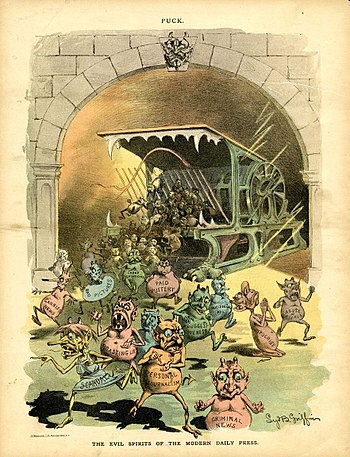This is an old revision of this page, as edited by 71.162.20.41 (talk) at 17:46, 4 July 2006. The present address (URL) is a permanent link to this revision, which may differ significantly from the current revision.
Revision as of 17:46, 4 July 2006 by 71.162.20.41 (talk)(diff) ← Previous revision | Latest revision (diff) | Newer revision → (diff)
Yellow journalism is a pejorative reference to journalism that features scandal-mongering sensationalism, jingoism or other unethical or unprofessional practices by news media organizations or individual journalists.
The term originated during the circulation battles between Joseph Pulitzer's New York World and William Randolph Hearst's New York Journal from 1895 to about 1898, and can refer specifically to this period. Both papers were accused by more established publishers of sensationalizing the news in order to drive up circulation, although the newspapers did serious reporting as well. The New York Press coined the term "Yellow Journalism" in early 1897 to describe the work of Pulitzer and Hearst. The newspaper did not define the term, and in 1898 simply elaborated, "We called them Yellow because they are Yellow."